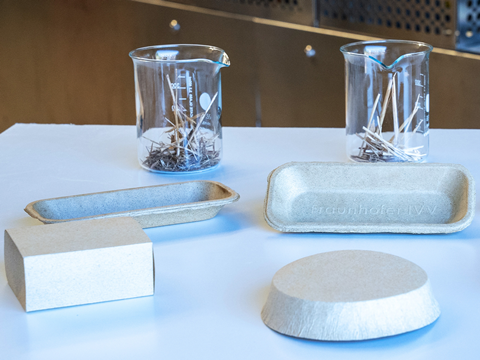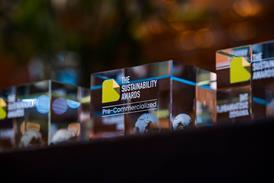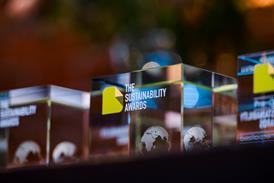
Researchers at the Fraunhofer Institute for Process Engineering and Packaging IVV are converting peatland plants into folding boxes, trays, and other paper-based packaging in search of an alternative, low-lignin raw material to wood.
Reportedly, Germany’s import rate for wood materials is ‘very high’ at 80%. As market prices continue to increase, alternative raw materials are being considered in the paper manufacturing process.
While peat moss, reed, reed canary grass, and other peatland plants are currently used as construction materials, animal feed, and foodstuff, Fraunhofer IVV believes they serve as an ‘attractive alternative’ to wood due to their low lignin content. This means that fewer chemicals are required to obtain a high-quality plant fibre during the pulping process.
“The less lignin content, that is, the natural adhesive in the plant cell walls, the lower is the use of resources, such as acids or alkalis, during chemical pulping and the more stable is the fibre network that forms,” explains project head Fabian Kayatz.
Under the EU Nature Reforestation Law, at least 30% of the surfaces in forests, grasslands, and wetlands must be rewetted and renatured in a process known as paludiculture. Therefore, the researchers anticipate that peatland plants will be given more space to grow in the future.
“Paludicultures help to maintain the peatlands and contribute to climate protection since they minimize carbon emissions — another reason to study them further,” says Kayatz.
As such, researchers have actively cultivated reed, sedge, reed canary grass, and other peatland plants in rewetted peat bogs and fens to test their viability in packaging applications. They claim to have achieved a lignin content ranging from 20% and 23%, depending on the plant, which is apparently 15% to 25% lower than the lignin content of softwood and hardwood.
Lignin from non-woody plants is also easier to release or separate from the fibres, according to Fraunhofer IVV. This means that pulping methods like alkaline soda pumping become less energy-intensive than manufacturing processes for wood fibres.
Not only was up to 83% of the lignin said to be released using Fraunhofer IVV’s method, with pulp yield said to be up to 53% depending on the combined parameters; the researchers apparently worked at temperatures of less than 100°C, up to 45% lower than the lowest values for chemical fibre pulping methods – and, as a result, less energy intensive.
The pulp from peatland plant fibres is also said to unlock better mechanical properties than pulp from corn, bamboo, and other straw pulps.
In further experiments, the researchers found that the flat, fibre-moulded papers they produced achieved ‘good’ processability, and were found to be suitable for folding, gluing, and printing, among other processing methods.
Their tensile strength described as ‘significantly higher’ than the egg carton-shaped reference sample. Implementing additives like starch and sizing agent improved its tensile strength, elasticity, and water-resistant properties.
Fibre-moulding and deep-drawing processes enabled researchers to turn reed fibres into ‘sturdy’ paper jars and trays without the use of additives, developing a laboratory plant specifically to produce these packaging demonstrators. Yet industrial-scale production will require additional optimization processes, they say.
Additionally, Fraunhofer IVV believes that certain properties still need to be optimized to package consumer goods in paludiculture-based materials; for instance, sensory perception and the coating of the material.
Initial plans are in place to manufacture packaging for non-food sectors like cosmetics, logistics, and office materials.
“Peatland plants have a great potential for manufacturing innovative, bio-based packaging, as we were able to show with our successful development of resource-friendly processes for pulp production,” says Kayatz. “The environmental aspect is very important to us — we support the preservation of our peatlands by rewetting agricultural lands and using them for paludicultures, for example.”
This research forms part of the PALUDI project, which in turn falls under the Fraunhofer Biogenic Value Creation and Smart Farming initiative. This is supported by the German Federal Ministry of Education and Research (BMBF), the Bavarian Ministry of Economic Affairs, Regional Development and Energy, and the Ministry of Science, Culture, Federal and European Affairs of Mecklenburg-Vorpommern.
The news comes as Ranpak revealed its recyclable void fill made from grass and recycled paper fibres late last year. Its manufacturing process is believed to consume less water compared to other kraft paper void fill products and diverisfy its renewable fibre sources in pursuit of circularity for secondary packaging materials.
Meanwhile, Corn Next plans to replace traditional plastics with a biobased material made from corn starch. Unlike other bioplastics such as PLA and PHA, CornNext-17 is said to retain its natural polysaccharide structure, maintaining the necessary mechanical properties while also facilitating thirty-day decomposition in natural environments.
If you liked this story, you might also enjoy:
The ultimate guide to the Packaging and Packaging Waste Regulation in 2024
How are the top brands progressing on packaging sustainability?
Sustainable Innovation Report 2024: Current trends and future priorities
Everything you need to know about global plastic sustainability regulation
















No comments yet